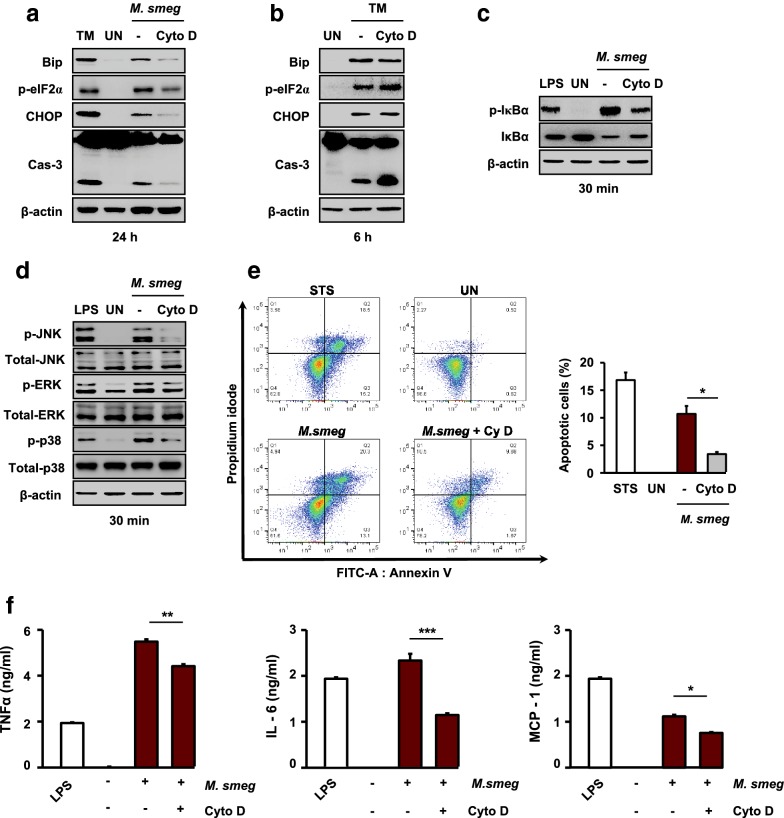Fig. 5.
M. smegmatis-induced ROS activate the ER stress response via the MAPK and NF-κB pathways. a, b RAW 264.7 cells were pretreated with the phagocytosis inhibitor Cyto D (20 μM) for 1 h and infected with M. smegmatis (MOI = 5) for 24 h or stimulated with TM (1 μg/mL) for 6 h. Western blot analysis was performed using specific antibodies against Bip, p-eIF2α, CHOP, and caspase-3. c, d RAW 264.7 cells were pretreated with Cyto D (20 μM) for 1 h and infected with M. smegmatis for 30 min. NF-κB and MAPK activation was measured by western blot analysis. e RAW 264.7 cells were pretreated with the phagocytosis inhibitor Cyto D (20 μM) for 1 h and infected with M. smegmatis (MOI = 5) for 24 h. Apoptosis was measured by Annexin-V/PI staining and FACS analysis. STS was used as the positive control. f RAW 264.7 cells were pretreated with Cyto D (20 μM) or NAC (30 mM) for 1 h and infected with M. smegmatis (MOI = 5) for 24 h. Inflammatory cytokine levels were determined by ELISA at 24 h. LPS (500 ng/mL, 24 h) was used as the positive control. Data are means ± SDs of three independent experiments. *p < 0.05, **p < 0.01, ***p < 0.001. M. smeg, Mycobacterium smegmatis; UN, uninfected; TM, tunicamycin; STS, staurosporine; LPS, lipopolysaccharide; Cyto D, cytochalasin D

